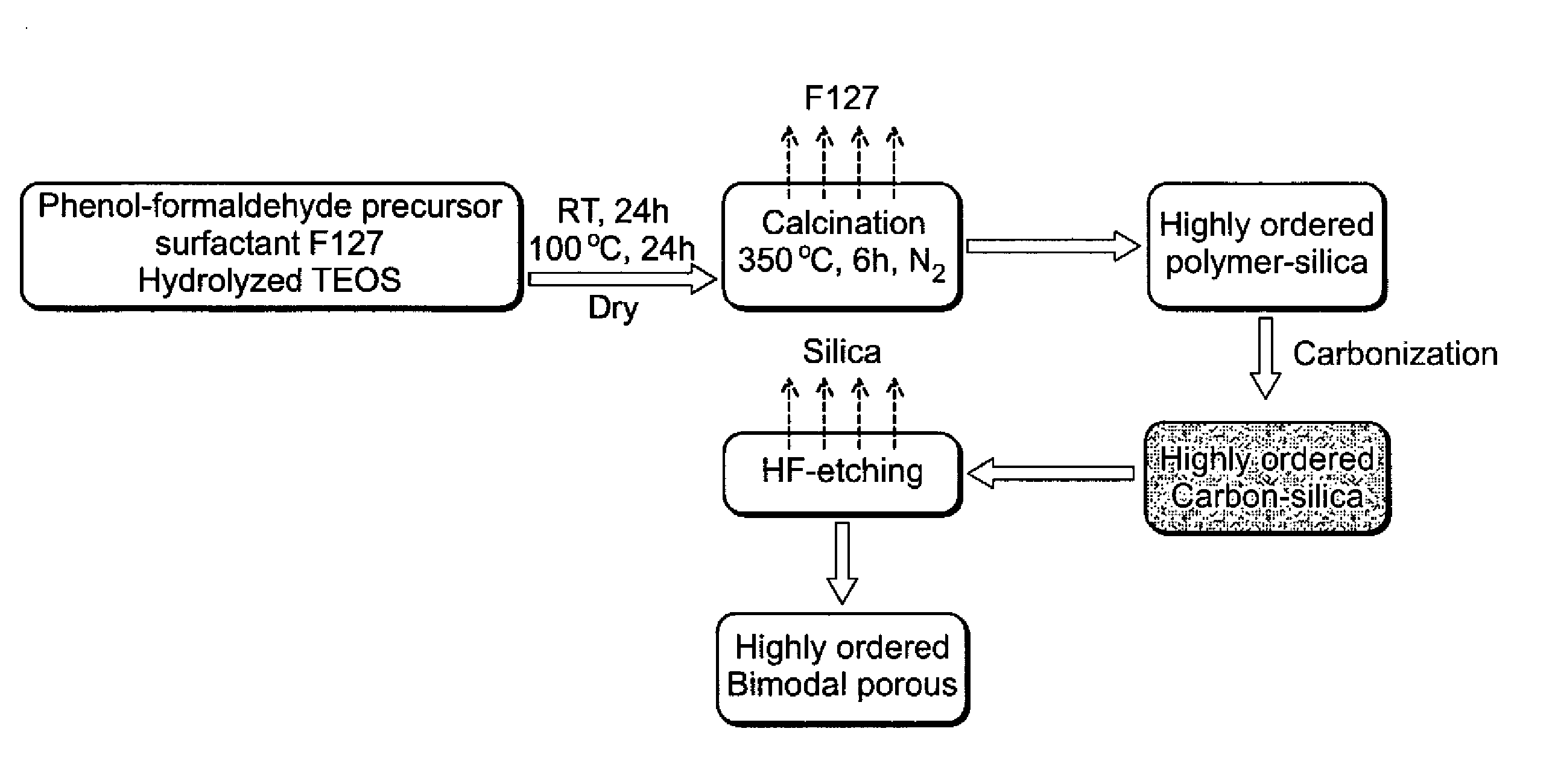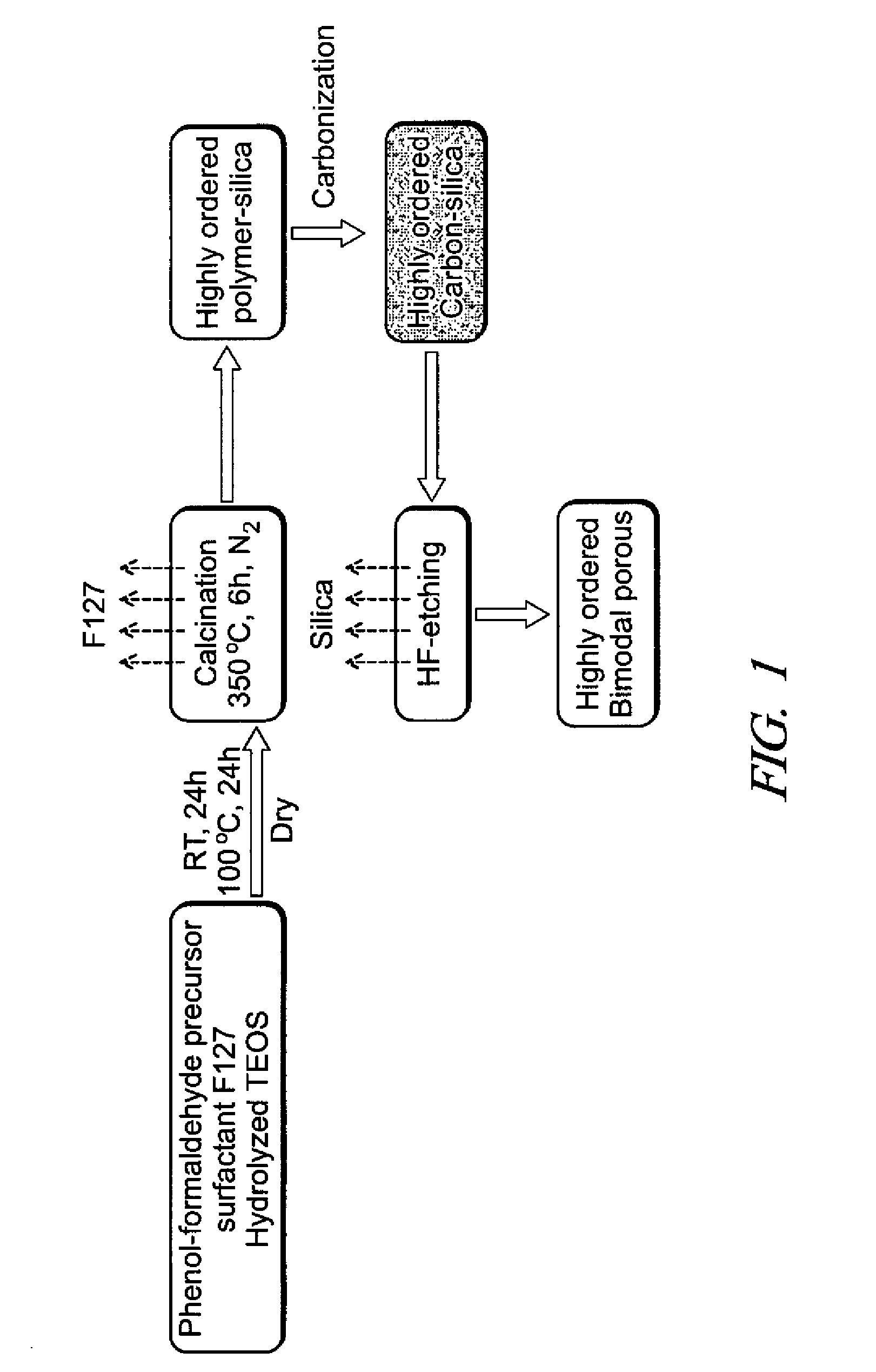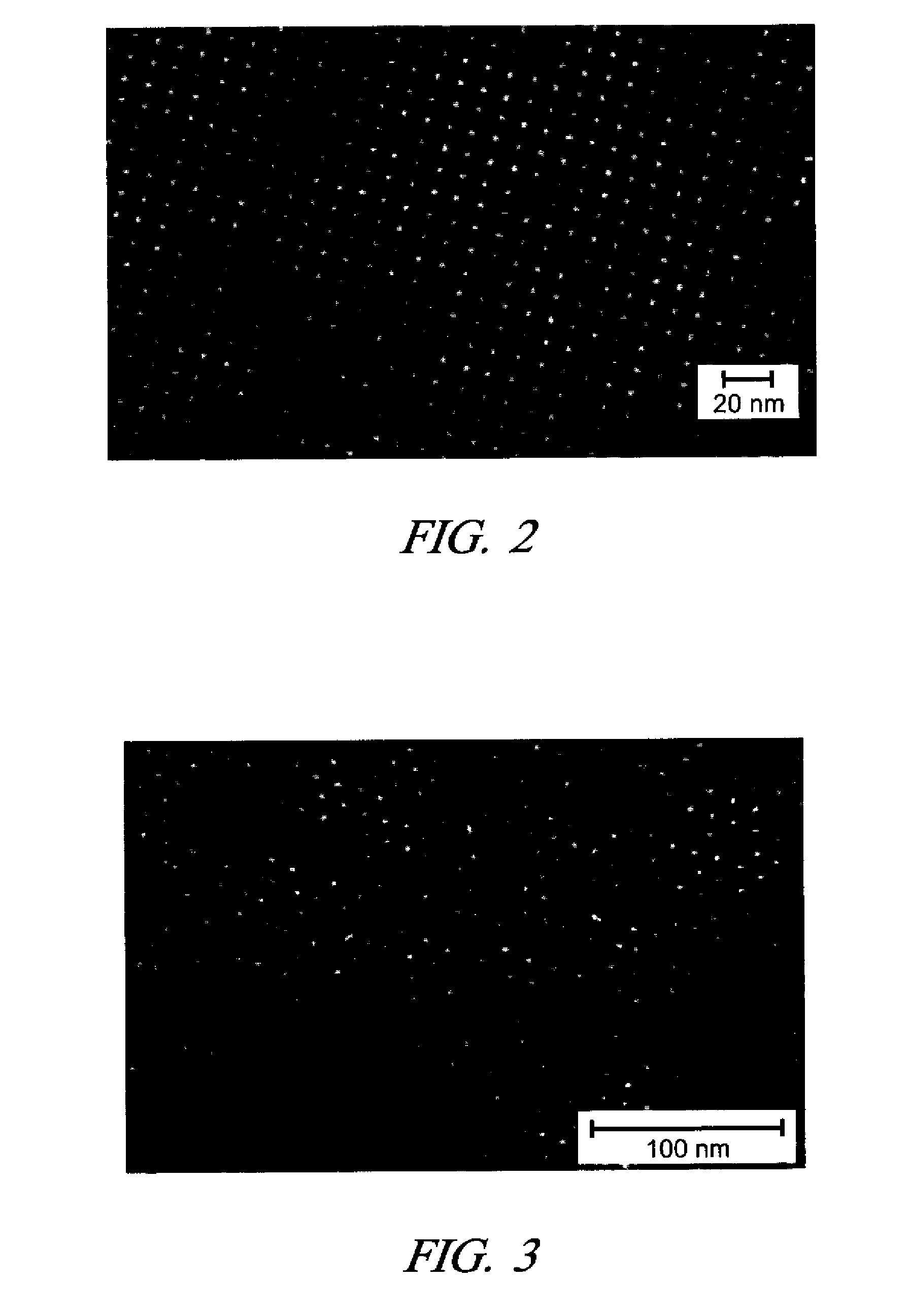Carbon and carbon composites with highly ordered mesosize pores
a technology of carbon and carbon composites and pores, applied in the direction of silica-polymorphs, silicon oxides, silica compounds, etc., can solve the problem that coating also tends to reduce the surface properties of carbon particles
- Summary
- Abstract
- Description
- Claims
- Application Information
AI Technical Summary
Benefits of technology
Problems solved by technology
Method used
Image
Examples
Embodiment Construction
[0019] This invention produces carbon particles with pore sizes uniformly in the mesopore size range of two to fifty nanometers in opening size. Smaller pore sizes, less than about two nanometers are termed micropores. Such pore sizes are usually too small for fuel cell catalyst support applications. Larger pore sizes, greater than about fifty nanometers, are termed macropores. Macropore size support particles are typically too large for fuel cell catalyst applications.
[0020] In accordance with this invention, a suitable surfactant is uniformly dispersed as micelles in a liquid medium (such as water) and used to form a well-dispersed mixture of a relatively low molecular weight carbonizable polymer and a silicate, such as ethyl orthosilicate. In a sense, the hydrophilic polymer and silica species can co-assemble with PEO containing surfactant hydrogen bonding because they each contain a large number of hydroxyl groups. The ordered polymer-silica nanocomposite is formed by simultane...
PUM
| Property | Measurement | Unit |
|---|---|---|
| Pore size | aaaaa | aaaaa |
| Pore size | aaaaa | aaaaa |
| Pore size | aaaaa | aaaaa |
Abstract
Description
Claims
Application Information
 Login to View More
Login to View More - R&D
- Intellectual Property
- Life Sciences
- Materials
- Tech Scout
- Unparalleled Data Quality
- Higher Quality Content
- 60% Fewer Hallucinations
Browse by: Latest US Patents, China's latest patents, Technical Efficacy Thesaurus, Application Domain, Technology Topic, Popular Technical Reports.
© 2025 PatSnap. All rights reserved.Legal|Privacy policy|Modern Slavery Act Transparency Statement|Sitemap|About US| Contact US: help@patsnap.com



